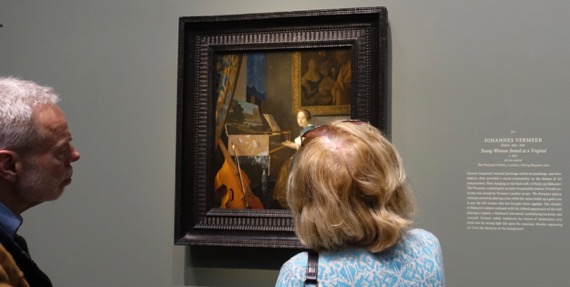
At the National Gallery this morning, we saw a buncha lovely paintings by Johannes Reijniersz Vermeer and those by (roughly) contemporaries/friends/competitors of his of similar subjects—very interesting comparative material from long ago in the mid- to late-1600s, also known as the Dutch Golden Age. One thing I found interesting: the painting titles did not generally name the person or persons portrayed (and they are usually unknown now), which seems to have been the original custom. I also learned that these painters sometimes used a tinted glaze over paint to achieve certain colors, and now that glaze has lost its ability to make that color shift; thus, a green parrot is now a nice grey-blue, beautiful, but quite different from a brilliant tropical green.
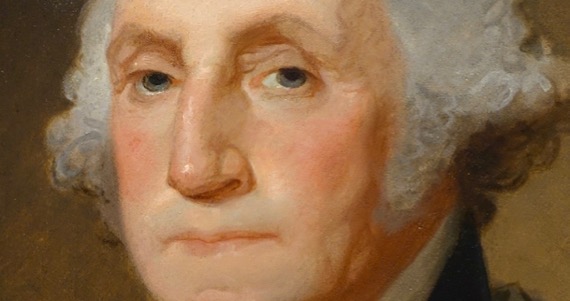
Moving on, we saw several paintings of famous dead white American men. Gilbert Stuart painted this famous 1821 portrait of George Washington from an earlier portrait he did when George was still alive. Washington paintings were a big business for Stuart—he painted over one hundred of them, most modeled on his 1796 original.
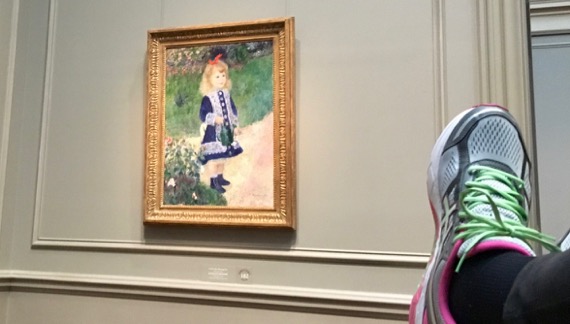
I had a textured print on cardboard copy of this painting in my room when I was growing up. I rested my foot (elevated) while gazing at this Renoir.
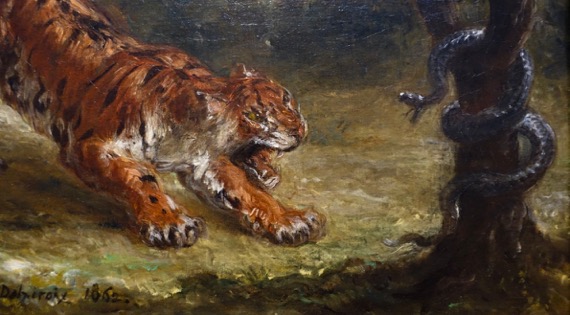
Totally different subject: Delacroix takes on tiger-and-snake relations (spats?).

In another room, Constant painted a Mediterranean babe.
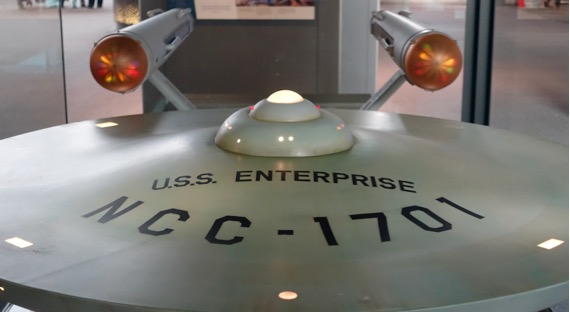
Over at Air and Space, we saw this original Enterprise model, freshly updated with LEDs, which are turned on for ten minutes only three times each day…. It’s in a prized location in the lobby…

…next to a giant space mural, of which this is a small, yet impressive corner.

Over at NMAI we saw a special exhibit on the Inca. This is a silver alloy jar for chicha, a fermented drink (“beer”) usually made from maize, with lovely corncob-legs and a human face. Maybe it makes the rather thick chicha more palatable?

Of course, the Inca were masters of fibers, making rope bridges across sizable chasms…

…and creating delicate knotted cords to register transactions and generate administrative records.